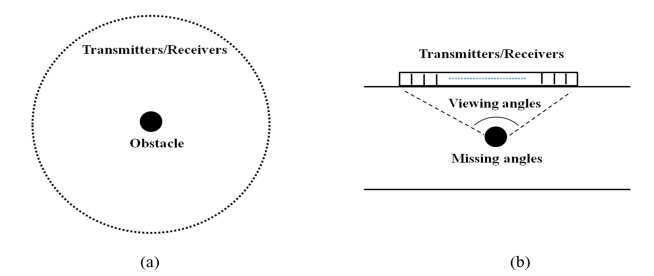
Ultrasonic imaging is an inversion process and the imaging quality highly depends on the data measured. In general, more data and viewing angles guarantee high-accuracy imaging, from which the shape/feature of an obstacle can be retrieved. However, in reality the imaging is always an ill-posed problem as the measurement is restricted by limited viewing angles, as shown in Fig. 1(b). The missing angles would significantly degrade the imaging quality compared with the full-view measurement setup in Fig. 1(a). The main motivation of this project is to develop advanced imaging algorithms that improve the ultrasonic imaging quality when the measurement data is highly limited. Success would deliver far more detailed integrity information to the NDE industry, enabling better lifting decisions and maximising component use without increasing risk of failures. The developed algorithms will subsequently spread to other fields apart from NDE, such as biomedical and seismic imaging.